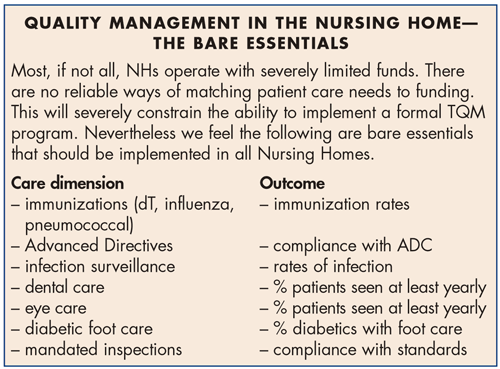Jean Chouinard, MD
Medical Director,
Complex Continuing Care Program,
SCO Health Service,
Ottawa, ON.
Background
The likelihood of admission to a nursing home (NH) is very much age-related. Roughly 5% of patients over the age of 65 live in institutions; this proportion rises to 50% for people aged 90 and up. With cutbacks in health spending, and the rising demand for this type of care, the NH populations are becoming increasingly frail and often have multiple coexisting active health problems on a background of precarious homeostatic reserve. Currently, over 50% of our inpatients are totally dependent on help for their care. Only 15% of these inpatients can ambulate independently. Such patients are also at much higher risk of complications. In our facilities, the yearly incidence rate of pneumonia is 200% (!), with a case fatality rate of 30%. Between 5 and 10% of patients admitted to Ontario Chronic Care Facilities will develop a pressure sore every quarter. Annual mortality rates in institutions range from 15 to 30%.1

Some definitions--in much abridged version2
A care process is a series of sequential or parallel interactions among clinicians and between clinicians and patients aimed at a given outcome.

